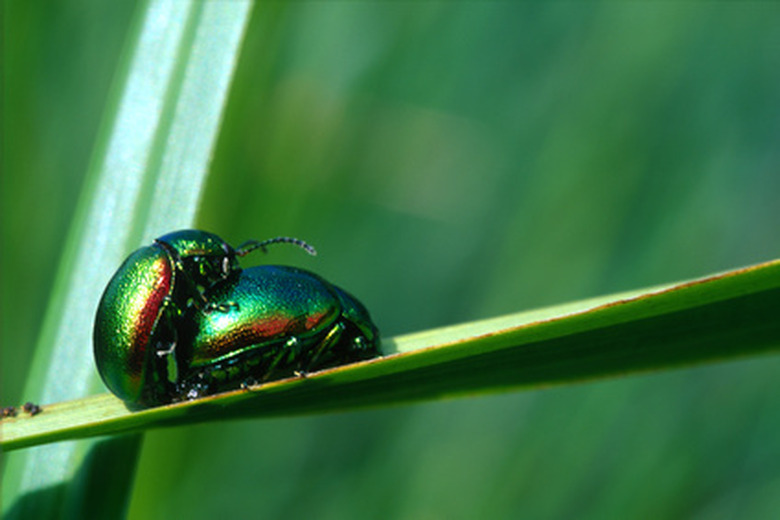How Do Japanese Beetles Reproduce?
Japanese beetles are an interesting curiosity of human nature. They have a shimmering greenish blue color and wings that are have a bronze or copper shading. They have an insatiable desire to eat and reproduce. Throughout these busy daily activities, they manage to kill plants along the way. They begin reproducing and the process begins again.
The Starting Point
The reproduction process for Japanese beetles officially begins when the adults start feasting on a plant. They produce the chemical congregation pheromone which is the drawing card for adult beetles to come for a visit with them on the plant. After the feeding party begins, the adult females begin to generate a sexual pheromone that will create an interest for the male beetles.
- Japanese beetles are an interesting curiosity of human nature.
- They produce the chemical congregation pheromone which is the drawing card for adult beetles to come for a visit with them on the plant.
Reproduction Process
This feeding and mating game for Japanese beetles is a reoccurring event every day or two. They are a multitasking group of beetles with the ability to simultaneously feed while mating. After the beetles mate, the female will dig down 4 inches in the ground to lay her eggs.
Egg Production
The female beetle places the eggs in the soil during the mid- to late summer season. They are white and oval-shaped, but become more circular while in the soil. They can produce up to five eggs at a time after a two-week hatching process. The soil does need to be moist to aid in the expansion of the eggs. The females take off the next morning or sometimes up to two days later only to come back for more feeding and mating. This is a continual process until she has produced from 40 to 60 eggs.
- This feeding and mating game for Japanese beetles is a reoccurring event every day or two.
- After the beetles mate, the female will dig down 4 inches in the ground to lay her eggs.
Stages Leading to Adulthood
The eggs turn into larvae with spiked hairs and settle into the ground in the winter time. During the spring, they emerge and then begin the process of working their way up the roots of plants. They are in the pupa stage at this point, but develop into adults in the latter part of June.
Adulthood
When the beetles finally enter the last stage of adulthood, they are oval-shaped and shiny green in color. They are around 1/4 inch in width and 3/8 inch in length. The females have five clumps of white hair on either side. The males have a pointed tip on their leg while the female has a circular one. They begin the natural cyclical process of feeding on plants and then mating once again.
- The eggs turn into larvae with spiked hairs and settle into the ground in the winter time.
